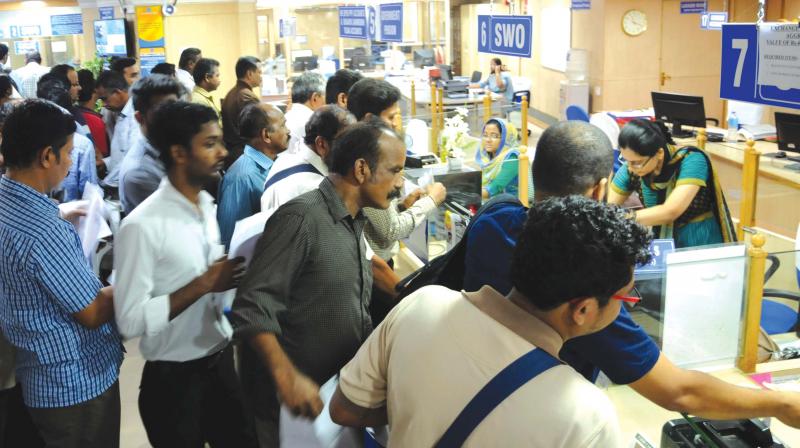The Centre's ultimate gamble with currency demonetisation
The surprise move comes with disadvantages for Kerala but will help the nation clean up its economy and finances.

The effectiveness of demonetisation should be evaluated against its proclaimed goals of abolition of black money and fake currency, curbing terror funding, moving towards a cashless transaction mode and inclusiveness in development agenda. The impact of this decision is very significant as compared to similar previous actions as it amounts to a withdrawal of 86 per cent of the total value of currency from circulation. If liquidity crunch is not solved within a short period, farming, animal husbandry, dairying and other activities in the informal sector would be paralysed. Also, regionally, the effect of the move would be felt on a massive scale in a state such as Kerala, where the commodity sector has already been in a depressed state without any sign of recovery in the near future.
Kerala is limping mainly owing to a deceleration in construction activities, entertainment and other related businesses, mainly dependent on liquid cash either from legal or illegal sources, including foreign remittances. These sectors will grind to a halt, at least for a while. In the short run, the state's revenue and its investment drive for infrastructure development would be jeopardised. The adverse effects, however, cannot undermine positive effects. The immediate effect would be the complete wipe-out of fake notes and a portion of black money in currency form (estimated to be around Rs 3 lakh crore) from circulation. The immediate increase in the liquidity of banks will lower interest rate and the cost of credit, which may boost investment demand and economic growth in future.
The drawing out of a large chunk of black money from circulation may increase the net worth of the balance sheet of the RBI, which would be converted in the form of dividends and finally transferred to the central government. This additional revenue will cushion the fiscal deficit and provide funds for additional welfare programmes and for infrastructural projects. Also, the withdrawal of black money reduces demand for conspicuous and unnecessary consumption in the near future. The settling of old debts in the wake of demonetisation along with the enhanced liquidity reduces the non-performing assets and increases the capital adequacy of banking system in the country. As the action is sudden and stern, it improves the credibility of central banks as well as the effectiveness of monetary policy.
The drive against black money and corruption may boost India's credit worthiness which may further improve the ease of doing business and attract more foreign investment at a cheaper rate. The panic in minds of all segments of tax evaders may boost the revenue from both direct and indirect taxes, which can be utilised for growth-promoting projects. In future, there will be a tendency to use more plastic money and online transactions, which not only improves transparency but also enhances the revenue potential of the government. The consequent widening of the tax net facilitates the mopping up of more revenue at even lower rates.
Promoting the people into law-abiding tax-paying citizens is one of the greatest merits of this policy. For many government reforms, such as introduction of goods and service tax, such a behaviour change among consumers, traders and other agents is a prerequisite. The complete success of the policy depends on post-demonetisation measures, mainly curbing black money in other forms such as gold and real estate and hoarding of money in informal financial institutions. The government will have to initiate measures to build confidence among the ordinary public to make the policy a success.
Also, without plugging the sources of its origin, no authority however strict in policy implementation, can eradicate the menace of black money. Corruption at the corporate level and the unholy nexus among politicians, bureaucrats and businessmen must end as a first step towards the drive against black money. Also, action against those who stashed black money outside the country, simplifying tax procedures, extending banking infrastructure such as branches and ATMs to remote areas, improving the financial literacy among the public in local languages and ensuring safe and risk-free online transactions are a few requisites for curbing black money and moving towards a regime of cashless transactions.
(The author is associate professor and head of the department of economics at the University College, Thiruvananthapuram).

